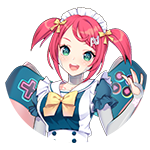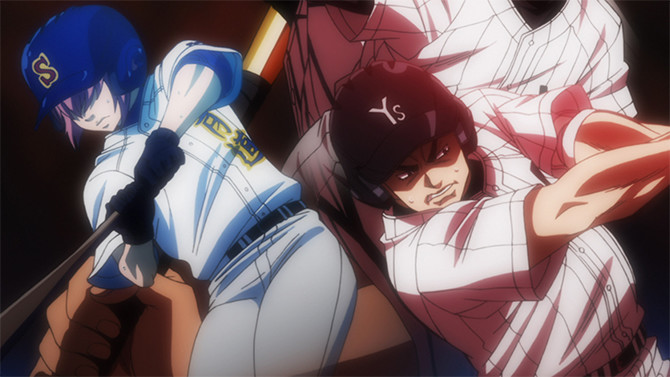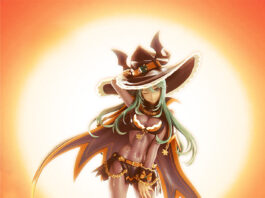Anime is famous for character tropes, and baseball anime is no exception. While many tropes like the ace pitcher or the high school sweetheart appear across all genres of anime, baseball anime has produced a few of their own character formulas. Some of these tropes have roots in American baseball, where over 150 years of tradition have carved out personalities for specialized members of a team. Some other tropes come specifically from kokoyakyu (Japanese high school baseball), the world where the majority of these shows take place. Here are some examples:
The Field General Catcher
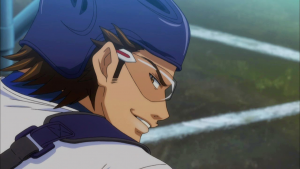
As the only defensive player with a view of the entire field, the catcher often assumes the responsibilities of aligning the defense, studying the opposing batters, and guiding the pitchers through their innings. No character embodies this better than Miyuki Kazuya from Ace of Diamond, Seidou’s team captain and genius backstop. While he presents many ace pitcher personality traits, his handling of the pitching staff and vocal responsibilities make him the unquestioned leader of his team. Battery’s Nakagura Gou and Touch’s Matsudaira Koutarou have similar traits.
Things can also get a little sexual between pitcher and catcher. As the names imply, catchers must often guide their battery mates in properly punishing their gloves with hard and sweaty pitches. But it’s totally not gay. Oofuri’s Abe Takaya would be the first to tell you his hand-holding of his lovestruck partner Mihashi is for the good of the team and not romantic in the slightest. No way.
The Drill Sergeant Coach
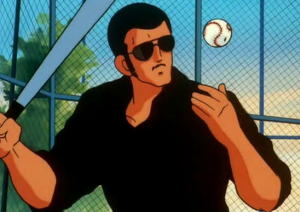
Japanese baseball’s emphasis on drills, discipline, and conformity offers many parallels to the military, with the head coaches often serving as the drill sergeant. For a typical kantou (coach), this doesn’t extend beyond exasperating defensive practice and consistent verbal reinforcement, Ace of Diamond’s Kataoka Tesshin the prime example. For others, like Touch’s Kashiwaba Eijirou, this sometimes stretches into the physical abuse of their players.
Perhaps the most intriguing drill sergeant is Oofuri’s Momoe Maria, the former softball star turned hard-ass head coach for the Nishiura baseball club. While occasionally offering motherly affection to her players, she organizes a daily regimen that would tax even the best-conditioned professionals, garnering no sympathy for anyone who can’t complete her early morning workouts. But she’s also a woman in power, and since this is anime, she has to have some cantaloupe-sized breasts.
The Eye Candy Manager
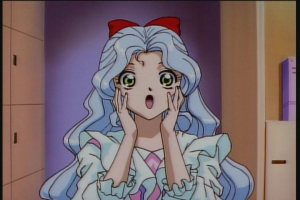
A kokoyakyu exclusive, the team manager fills the dual role of assisting the baseball club and sparking its players’ sexual fantasies. There’s no rule in kokoyakyu that says a team manager has to be a girl or an attractive one at that, but where else are you going to find them in a sports shounen?
H2’s Amamiya Hikari and Koga Haruka represent the typical agency-less managers, identified more by their relationships with their boyfriends than their own personalities. The problem worsens in Ace of Diamond, where only one of the four managers gets a name at all, and whose only thoughts pine over the main character Sawamura. At least Princess Nine’s Nene Mori gives an ironic wink every time she buys into the trope. She does much of her work in a cheerleader outfit and remarks how her knowledge of the job comes exclusively from baseball manga.
Narrative Framing Reporters
Do you have an important plot point that wouldn’t make sense if it were spelled out by the players? Don’t sweat it, that’s what reporters are for. With their vast knowledge of the game and exclusive access to its players and coaches, a mangaka does not need showing plot development when they can just have the reporters explain it to them.
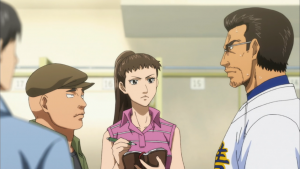
It doesn’t make much sense for Ace of Diamond’s Mine and Oowada to spend this much time covering Seidou High School when they have hundreds of teams to cover, but having them in the bleachers as expository puppets sure beats the hassle of complex storytelling. It became plain in One Outs that Shirooka was dying to tell someone about his unique strategy, and the post-game reporters served as the ideal soundboard. They weren’t the only ones who could’ve asked the questions, but they’re the only ones whose job it is to get those answers.
The American

Sometimes blonde with blue eyes, sometimes black with tattoos and dreadlocks, always brazen and arrogant: the American interloper always resists the traditions of Japanese baseball. You are supposed to hate him.
One Outs’s Johnson and Brooklyn sweat exceptionalism with their giant faces and aggressive personalities. Though he later turns into a sympathetic figure, Major’s Joe Gibson introduces himself with a proper American dismissiveness of foreigners. Ace of Diamond’s Chris-senpai stands out as the exception, though the sexual tension between he and Sawamura gets a little loaded. But it’s totally not gay. Nothing about baseball anime is gay.
The Ace
Though all of these character tropes (and a few others like the speedy centerfielder and the power-hitting third baseman) make fleeting appearances in some baseball anime, one character, in particular, shows up in all of them: the ace pitcher. But, this is for another article.
